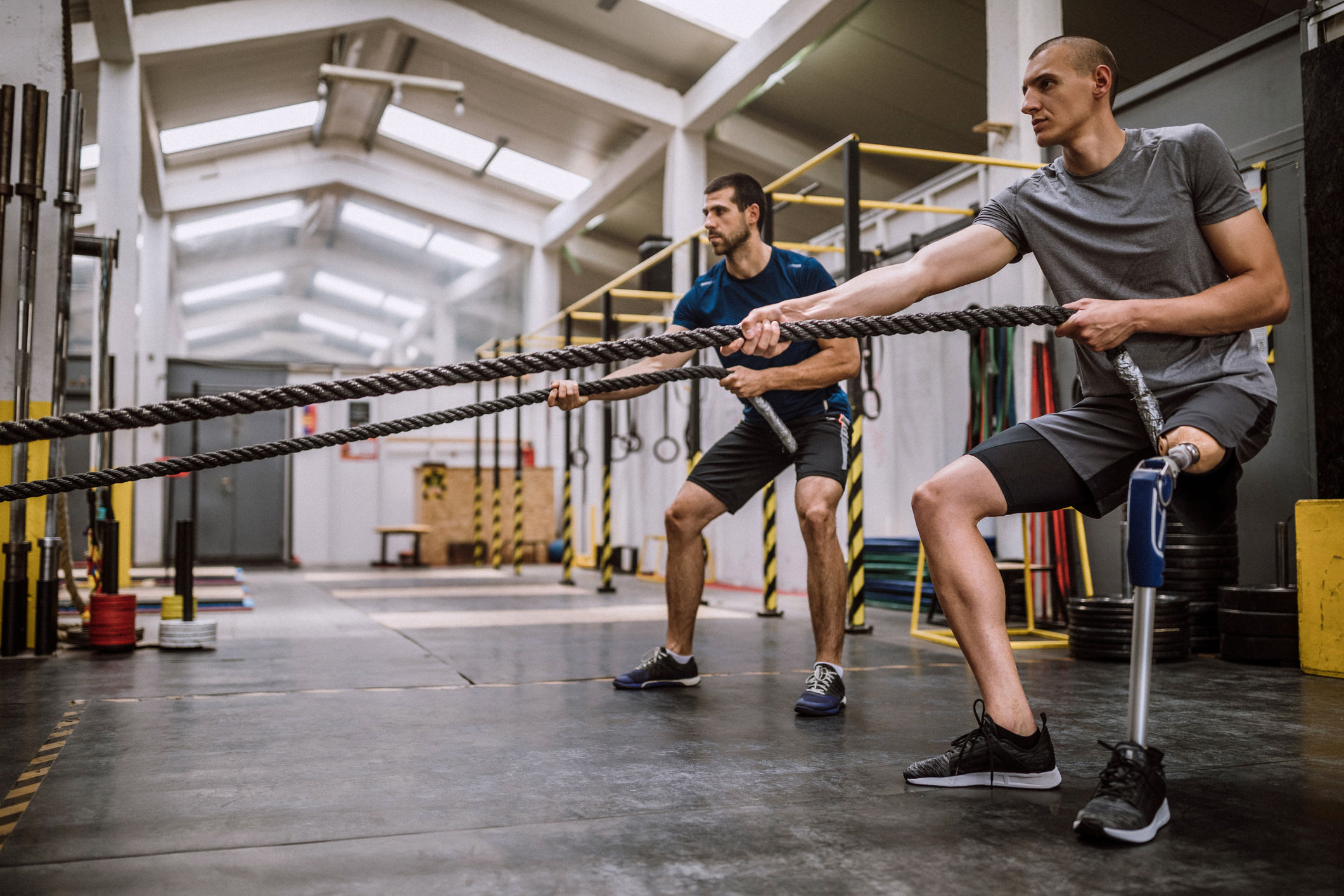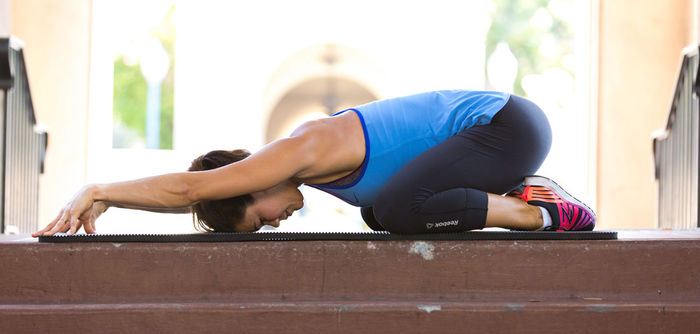Using inclusive language is a key element in creating successful exercise experiences for participants. It demonstrates your intention to provide them with holistic, person-centered care and it ensures that participants feel connected and safe. From marketing to programming, each interaction has the capacity to generate more trust, which positively affects both your business and the well-being of participants.
What Is Inclusive Language?
Inclusive language is intentional and thoughtful; recognizes, honors and supports participants' identities, abilities and goals; and facilitates belonging.
Inclusive language is the consideration and acknowledgment of identities, including age, gender, race, sexual orientation, ability, body size and socioeconomic status, to name a few. In the context of the fitness industry, it also includes elements such as an individual’s physical literacy, goals and experience. The concept of inclusive language in fitness asks us to reconsider old standards or narratives about what it means to be an exercise participant and counter that with experiences that support each person’s well-being.
In the article Why Inclusive Language Matters by the American Psychological Association, Efua Andoh writes: “Inclusive language is more than just avoiding the use of a few antiquated or offensive terms and phrases. It is about embracing communication that acknowledges the power differentials and dynamics of our society and their deleterious effects. It is about showing appreciation for the diversity everyone brings to the table. And finally, it is about creating cultures where people can feel free to be their full authentic selves.”
Utilizing inclusive language is one way to truly care for the people you serve. It demonstrates that you see them, that you make a thoughtful effort to engage with them as they are and creates space for their uniqueness to be validated, thereby ensuring each person feels they belong in fitness spaces.

The Value of Inclusive Language in the Fitness Industry
Fitness spaces do not always allow everyone to feel like they belong. These environments can feel scary, intimidating and physically or emotionally unsafe. By using inclusive language in your direct and indirect interactions with participants, you can deliver experiences that elicit comfort and belonging, specifically in these three areas:
-
Rapport: Intentional and inclusive language allows for a more meaningful connection between the exercise professional and the participant. When participants feel their uniqueness is recognized and supported, they are more likely to develop rapport with the professional.
-
Safety: In this context, safety is two-pronged: First, physical safety allows participants to feel they have complete agency to make exercise choices that align with their abilities, wants and needs without fear of judgment or shame, allowing them to choose the appropriate movements and intensities for their comfort level. Second, emotional safety allows people to feel that the environment and culture support them as they are.
-
Increased self-efficacy: Participants who feel a connectedness and a sense of belonging in fitness spaces are much more likely to have positive exercise experiences, thus increasing their self-efficacy and positively affecting their adherence.
Using Inclusive Language in Fitness Spaces
Utilize inclusive language consistently in all forms of communication, including customer service, operational communication (e.g., emails, auto-notifications), marketing copy and images, and in all exercise programming interactions.
While this article cannot possibly identify all the inclusive language possibilities, here are a few areas where exercise professionals can be mindful:
-
Gender-neutral language: You can be more inclusive by removing gendered language from exercise names (i.e., girl push-ups) and weight or intensity choices (e.g., women use X weight and men use X weight). Instead, differentiate by the options for desired intensity. In welcoming your class participants, use language such as team, class or all instead of guys. Most importantly, remove any preconceived ideas of what a participant's interests or abilities might be based on their gender.
-
Size-inclusive language: Utilize language demonstrating that all body shapes, sizes, and weights are equally worthy of love and respect. Engage with participants without assumptions that body size determines their health, experience level or goals. Choose cues that recognize and support the unique needs of different bodies without shame or judgment. Exercise and health professionals can also consider using body neutrality with participants.
-
Positive, affirming and empathetic cues: When we place an expectation regarding the types of movement or intensity that participants should meet, it creates a sense of “othering” when they don’t meet those expectations. This may create a belief that they might not be good enough to participate at all. In group classes, provide many options for participants to choose from and affirm their choices, rather than giving an option only if they can’t do the suggested movement. Remove language that is based on fear, pain or suffering (e.g., I’m going to kick your butt today) and celebrate attendance and participation rather than a specific intensity achieved. Utilize positive, affirming and empathetic language in your marketing copy to demonstrate the future experiences that new participants will have with you.
-
Language that supports all health outcomes associated with exercise: Acknowledge all the great benefits of exercise rather than assuming each participant has the same intended outcome (i.e., weight loss). Use cues that emphasize all health behaviors, including such things as mental and emotional health, building a sense of community and learning new things. This can be executed through participant interactions and conveyed in your communication and marketing.
-
In support of you and the participants: Exercise professionals should also use inclusive language when sharing personal feelings about themselves. How you talk about yourself in front of participants can either prop up or negate any validation or empathy you have shown them. Be mindful of comments about topics such as your body, abilities and intensity choices, as well as their effect on your participants.
Ask for Feedback
The intention to use inclusive language is great, but knowing your impact is better. Ask for feedback from your current participants on how you can better support them with your language.
Inclusive language demonstrates your care for participants and helps attract, support and retain them, ensuring a successful exercise experience and the success of your business. Review the American Psychological Association’s Inclusive Language Guidelines for more information on the specifics of inclusive language.
To learn more about inclusive approaches to exercise leadership and how you can support all clients or participants on their fitness journeys, complete this continuing education course: Fitness for Healing: Trauma-informed Approaches (worth 0.1 ACE CECs).
For more information, check out these other ACE continuing education courses:
 by
by 






